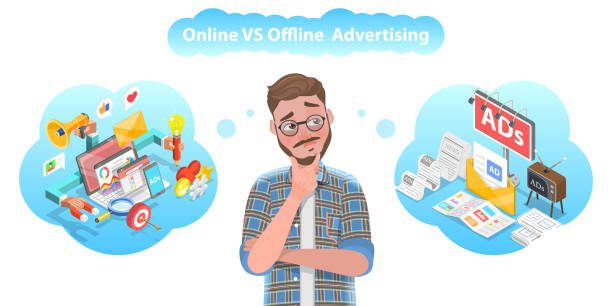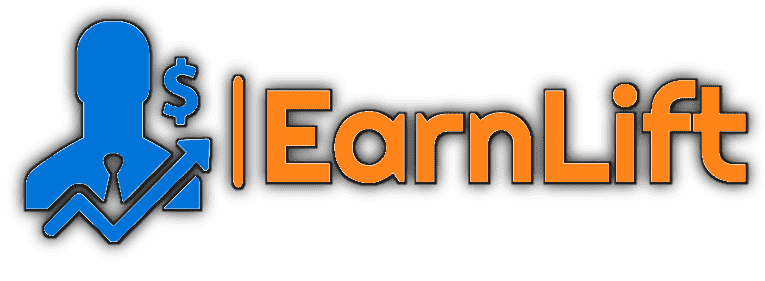Traditional Marketing vs Digital Marketing: A Comprehensive Comparison

Table of Contents
ToggleIntroduction:
In the vast realm of marketing, two powerhouses have emerged, engaging in a relentless battle for supremacy. Traditional marketing, with its roots deeply embedded in history, has long relied on print, broadcast media, and direct mail to reach audiences. On the other side of the ring, digital marketing has swiftly risen, harnessing the power of the internet, search engines, social media, and data-driven strategies. In this comprehensive comparison, we delve into the strengths, weaknesses, and untapped potential of traditional marketing and digital marketing. Join us as we uncover the key insights that will guide your business toward unprecedented growth and success!
Part 1: Traditional Marketing - The Time-Honored Warrior
1.1 Print Media: Embracing Tangibility in a Digital World
– Newspapers, magazines, brochures, and flyers have been the staple of traditional marketing.
– The tangible nature of print media offers a unique sensory experience that digital channels struggle to replicate.
– However, declining readership and the soaring costs associated with printing and distribution pose challenges in the digital age.
1.2 Broadcast Media: Captivating the Masses through the Airwaves
– Television and radio advertising have captivated audiences during prime time for decades.
– The persuasive power of visuals and the ability to target specific demographics give broadcast media an undeniable advantage.
– Yet, ad-skipping technologies and the growing trend of cord-cutting present new obstacles to overcome.
1.3 Direct Mail: Forging Personal Connections
– Direct mail marketing enables businesses to create personalized experiences for potential customers.
– The physical connection established through direct mail resonates with recipients on a deeper level.
– However, the high costs associated with printing, postage, and potential environmental concerns have led to a decline in popularity.
Part 2: Digital Marketing - The Innovative Titan
2.1 Search Engine Optimization (SEO): Conquering the Digital Landscape
– SEO empowers businesses to improve their online visibility and organic search rankings.
– By aligning with search engine algorithms, companies can attract targeted traffic and achieve long-term results.
– However, staying on top of constant algorithm updates and battling fierce competition necessitate continuous efforts and specialized expertise.
2.2 Pay-Per-Click (PPC) Advertising: Precision Targeting at Its Finest
– PPC advertising allows businesses to precisely target keywords, demographics, and interests.
– This level of specificity optimizes ad spend, ensuring that marketing efforts are focused on the most relevant audiences.
– Yet, the rise in competition and escalating costs can pose challenges, particularly for small businesses with limited budgets.
2.3 Social Media Marketing: Cultivating Authentic Connections
– Social media platforms provide unparalleled opportunities to engage directly with the audience.
– The ability to create viral content, foster brand loyalty, and leverage influencer partnerships is invaluable.
– However, staying relevant amidst ever-changing algorithms, maintaining consistent engagement, and navigating the social media landscape require dedicated effort and adaptability.
Part 3: The Ultimate Showdown - A Comparison for the Ages
3.1 Cost-Effectiveness: Traditional vs. Digital
– Traditional marketing often incurs significant costs due to printing, distribution, and airtime expenses.
– Digital marketing, on the other hand, offers cost-effective options that allow businesses to scale campaigns based on budgetary constraints.
3.2 Targeting and Analytics: Precision and Measurable Results
– Digital marketing excels in precise targeting, allowing businesses to reach specific demographics, interests, and behaviors.
– Traditional marketing relies on assumptions and broader reach, making it more challenging to measure ROI effectively.
3.3 Flexibility and Adaptability : Embracing the Dynamism of Marketing
– Digital marketing strategies provide the agility needed to make quick adjustments to campaigns based on real-time monitoring and instant feedback.
– Traditional marketing methods often require longer lead times and are less adaptable to rapidly changing market conditions.
Before Digital Marketing:
– Digital marketing strategies provide the agility needed to make quick adjustments to campaigns based on real-time monitoring and instant feedback.
– Traditional marketing methods often require longer lead times and are less adaptable to rapidly changing market conditions.
1. Limited Reach:
In the pre-digital era, businesses were often limited to reaching local or regional markets through traditional marketing methods. Print media, broadcast media, and direct mail campaigns had inherent geographic restrictions, making it challenging for businesses to expand their customer base beyond their immediate vicinity.
2. Higher Costs:
Traditional marketing methods often incurred significant expenses, especially for small businesses with limited budgets. Costs associated with printing materials, distributing brochures or flyers, and purchasing airtime for television or radio advertisements could be substantial, making it difficult for businesses to allocate sufficient funds for effective marketing campaigns.
3. Limited Targeting:
Traditional marketing relied on broad targeting strategies, reaching a wide range of audiences with the hope of capturing the attention of potential customers. However, this approach often resulted in a lower conversion rate, as businesses struggled to reach their ideal target audience with precision. The lack of detailed data and targeting options made it challenging to tailor messages specifically to the needs and interests of different customer segments.
4. Difficulty in Measuring Results:
Traditional marketing methods often lacked effective metrics to measure the success and impact of marketing campaigns. Businesses had limited visibility into the reach, engagement, and conversion rates of their advertisements or promotional efforts. This made it challenging to assess the return on investment (ROI) and determine the effectiveness of specific marketing strategies.
5. Limited Interactivity:
Traditional marketing channels provided limited avenues for direct interaction and engagement with customers. Businesses had minimal opportunities to receive immediate feedback, address customer queries or concerns, and build lasting relationships. Communication was often one-sided, with businesses broadcasting their messages without the ability to engage in real-time conversations with their target audience.
After Digital Marketing:
1. Expanded Reach:
The advent of digital marketing has transformed the business landscape, enabling businesses to transcend geographical boundaries and reach global audiences. Digital marketing channels, such as websites, search engines, social media platforms, and email marketing, provide businesses with the opportunity to connect with potential customers across the world. This expanded reach opens up new markets and customer segments, allowing businesses to grow and expand their operations like never before.
2. Cost-Effectiveness:
One of the significant advantages of digital marketing is its cost-effectiveness compared to traditional marketing methods. Digital marketing offers a range of affordable options, such as pay-per-click (PPC) advertising, email marketing, and social media advertising, allowing businesses to optimize their marketing budgets. With the ability to target specific audiences and track campaign performance in real-time, businesses can allocate their resources efficiently, ensuring maximum ROI.
3. Precise Targeting:
Digital marketing provides businesses with the tools and techniques to precisely target their ideal customer segments. Through data-driven insights and analytics, businesses can identify their target audience based on demographics, interests, behaviors, and even location. This precise targeting helps businesses deliver personalized messages, products, and services to the right people at the right time, resulting in higher conversion rates and improved customer engagement.
4. Measurable Results:
Unlike traditional marketing, digital marketing offers robust analytics and tracking tools that enable businesses to measure the performance of their marketing campaigns accurately. Businesses can gather valuable data on impressions, clicks, website visits, conversions, and other key metrics to evaluate the success of their marketing efforts. This data-driven approach empowers businesses to make informed decisions, optimize their strategies, and continually improve their marketing campaigns for better results.
5. Enhanced Engagement:
Digital marketing channels foster direct engagement and interaction between businesses and their customers. Social media platforms, in particular, provide opportunities for businesses to have meaningful conversations, address customer queries or concerns, and build lasting relationships. The ability to respond in real-time and provide personalized experiences helps businesses cultivate customer loyalty and establish themselves as trusted authorities in their respective industries.
Conclusion:
In the battle of traditional marketing versus digital marketing, each approach offers unique advantages and challenges. Traditional marketing channels boast a tangible touch and wide reach, while digital marketing strategies deliver precision, cost-effectiveness, and adaptability. Recognizing that there is no one-size-fits-all solution, savvy marketers are embracing a hybrid approach that harmonizes traditional and digital marketing tactics, leveraging the best of both worlds.
At EarnLift, we understand the complexities of modern marketing and are dedicated to helping businesses thrive in the digital landscape. With our expertise in SEO, PPC advertising, social media marketing, and more, we can tailor strategies that align with your business goals. Contact us today to embark on a transformative journey that propels your business forward!
User also read this:


As you mentioned: Digital marketing is often more cost-effective than traditional marketing, especially if you’re using free or low-cost channels such as social media or email. We are also interested to grow our business digitally.
It’s easy and convenient to lead your business online digitally.
Thank you for such an interesting comment on our blog.
“EarnLift’s article on the comparison between traditional marketing and digital marketing is an eye-opening read! The detailed analysis and comparison of both marketing techniques provide valuable insights into the pros and cons of each. This post is a must-read for businesses looking to expand their reach and decide which marketing technique would work best for them.”
Thank you for showing your interest in our blog posts.
“EarnLift’s blog post is a comprehensive guide that breaks down the differences between traditional and digital marketing in a way that’s easy to understand. The article highlights the importance of adopting a holistic approach that includes both techniques in order to achieve maximum impact. I highly recommend this post to anyone who wants to gain a better understanding of the marketing landscape and stay ahead of the game.”
Thanks for recommending our post on traditional marketing vs digital marketing.
Nice informative about the digital marketing.
It’s very much helpful for new business growth.
Thanks
Thank you for showing your interest and hope.
bahut hi acchi jankari hai aapki website par
Thank you for encouraging and reading our blogs.
Dear EarnLift,
We found your article “Traditional Marketing vs Digital Marketing: A Comprehensive Comparison” to be very informative and helpful in understanding the differences and advantages of these two marketing approaches. Your analysis of the strengths and weaknesses of each method was well-presented and supported by examples.
I appreciated your point that traditional marketing methods can offer a tangible experience for customers, which can be an advantage in certain industries. However, your discussion of the limited analytics and targeting of traditional marketing methods was spot on. Digital marketing’s ability to track and measure the effectiveness of campaigns is one of its most significant advantages.
Your comparison of the cost-effectiveness of digital marketing versus traditional marketing was also insightful. As digital marketing channels become more popular and accessible, companies can achieve a wider reach at a lower cost compared to traditional methods.
Overall, I found your article to be a useful resource for anyone looking to better understand the differences between traditional marketing and digital marketing. Thank you for sharing your expertise with us.
Best regards,
Jawahar Associates
Dear Jawahar Associates,
Thank you for taking the time to read and comment on our blog. We appreciate your thoughtful insights and feedback on our content.
We are glad that you found our blog to be informative and useful. It is our goal to provide valuable resources and insights to our readers, and we are thrilled to hear that our efforts are resonating with our audience.
Your comments and suggestions are highly appreciated, and we will keep them in mind as we continue to create content in the future. We value feedback from our readers and always strive to improve and grow.
Once again, thank you for your engagement with our blog. We look forward to your continued participation and hope to provide even more valuable content in the future.
Best regards,
EarnLift